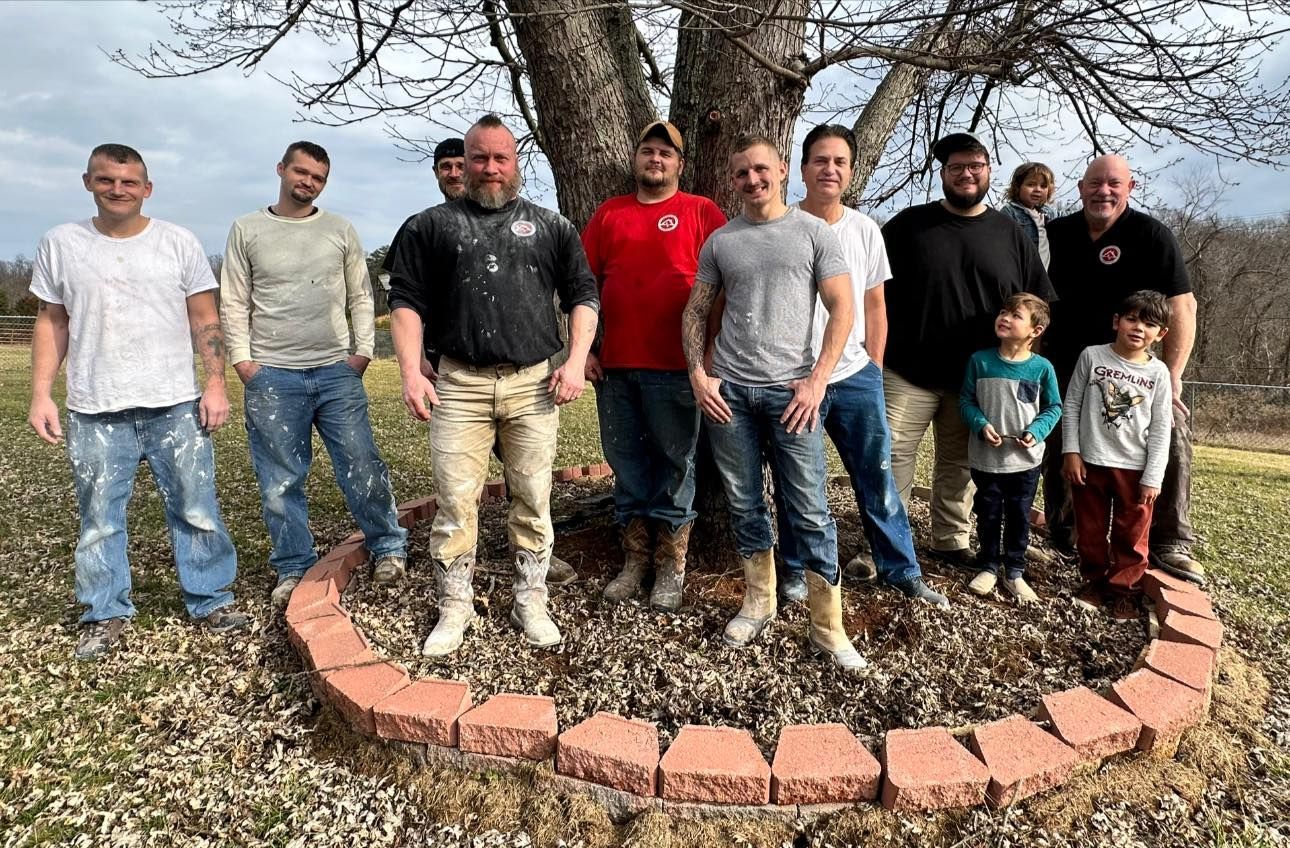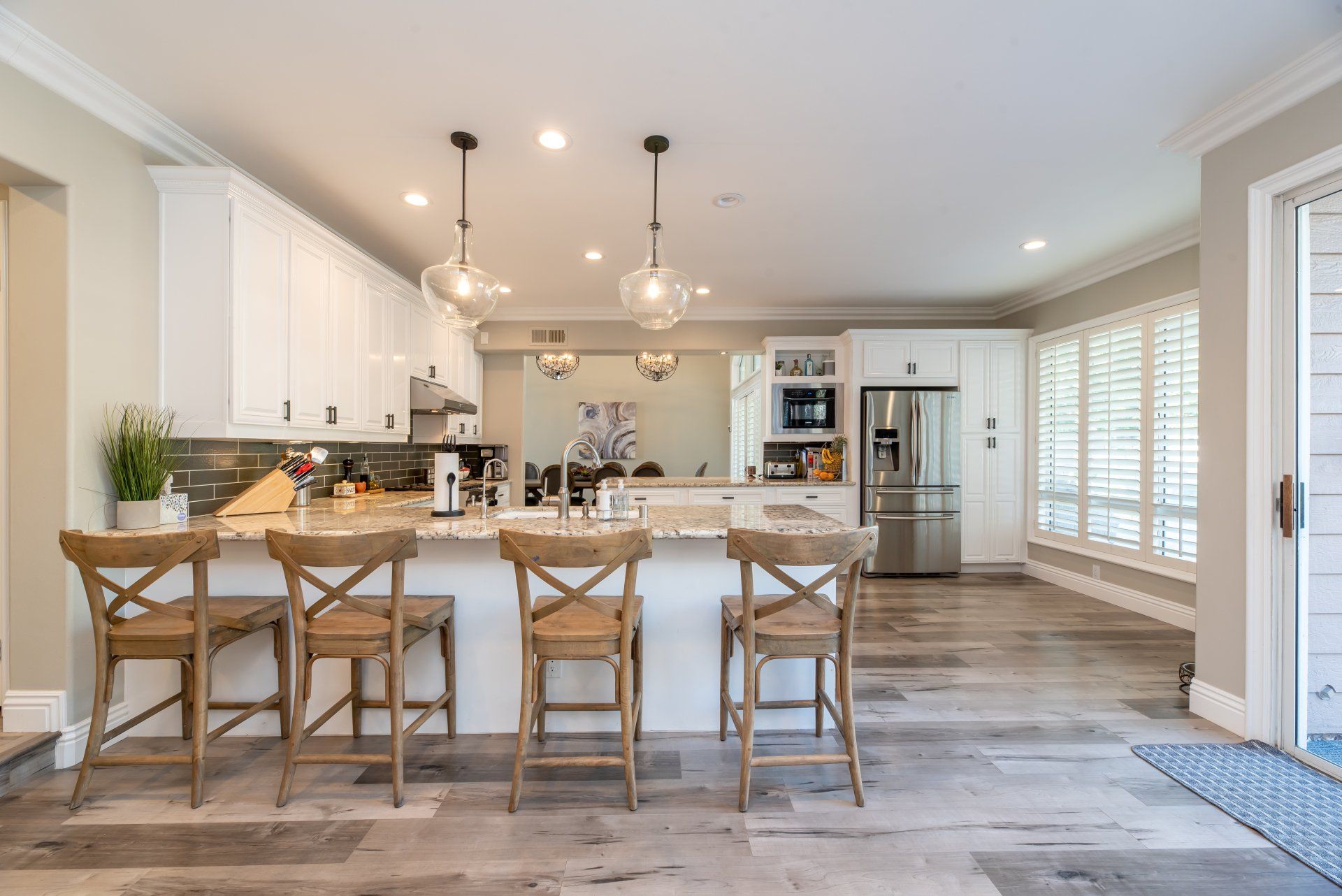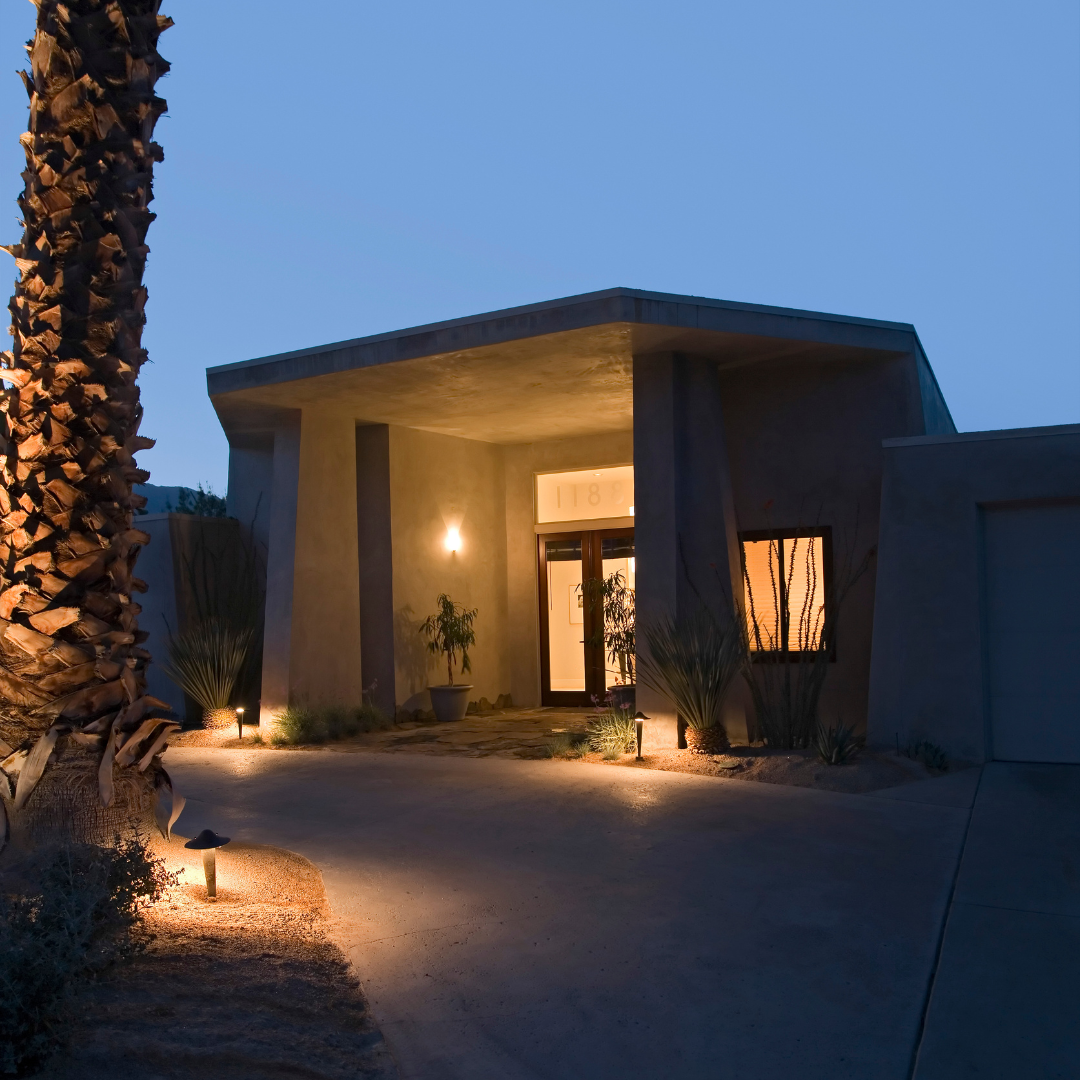Homebuilders
Understanding
Homebuilders
Navigating the complex world of homebuilding can be a daunting task. With a myriad of factors to consider, from design trends and construction processes to licensing requirements and financing options, building a home is both an art and a science. This comprehensive guide aims to provide all the information prospective homebuyers need to get to know more about homebuilders and homebuilding companies in general.
1. Types of Homebuilders
Every dream home starts with a vision, and in the homebuilding industry, different builders specialize in turning those dreams into reality. From custom home construction, tailored to your exact specifications, to production builders with predefined floor plans catering to a larger market, the options are diverse. Furthermore, regional homebuilders focus on specific areas such as California, New York, Houston, South Carolina, West Virginia and more. For the eco-conscious, there are builders prioritizing energy-efficient designs and sustainable materials, setting trends across the country.

-
Types of Homebuilders
Every dream home starts somewhere, and in the intricate world of homebuilding, it's often with the type of builder you choose.
Custom Home Builders:
Imagine crafting every nook and cranny of your home, tailoring each space to your unique preferences. Custom home builders make this dream a reality. They construct one-of-a-kind homes, designed specifically to client's wishes, ensuring your residence is as unique as your vision.
Production Builders:
For those seeking a balance between customization and convenience, production builders offer the perfect solution. They typically have a portfolio of floor plans and design templates to choose from. The advantage? A streamlined process, with room for personal touches.
Regional Homebuilders:
Building codes, climate requirements, and even cultural nuances differ across the country. Regional homebuilders bring local expertise to the table, specializing in specific territories—whether it's the sandy beaches of Florida or the bustling streets of New York.
Sustainable Builders:
As awareness about environmental issues grows, sustainable builders are leading the charge towards greener living. These builders emphasize energy-efficient designs, sustainable materials, and practices that lessen environmental impact. Imagine a home powered by solar energy, insulated to perfection, and boasting a garden that complements the local ecosystem.
Spec Builders or Speculative Builders:
Sometimes, builders construct homes without a specific buyer in mind, anticipating that a buyer will come along once the home is completed. These are known as spec homes, built based on the builder's speculation of market demands.
Tract Homebuilders:
For those looking to move into a community with similar aesthetics and home designs, tract homebuilders are the go-to. They buy a plot of land, divide it into smaller plots, and build homes based on a set of predetermined designs.
As the foundation of the homebuilding process, understanding the different types of builders is essential. It determines the level of customization, the price range, and even the timeline of your home construction. Whether you dream of a bespoke sanctuary or a cozy home in a bustling community, there's a builder out there to turn your vision into bricks and mortar.
2. Homebuilder Licensing Requirements
Before turning the first shovel of soil, homebuilders need the right credentials. Adhering to state regulations, builders must obtain the necessary licenses, showcasing their expertise, and ensuring safety for future homeowners. In areas like North Carolina, Arizona, and Tennessee, specific licensing protocols are vital for operation. It's crucial to note that licensing isn’t just a formality—it's a testament to a builder’s commitment to upholding industry standards and delivering quality homes.
-
Homebuilder Licensing Requirements
Navigating the world of homebuilding means ensuring that every step taken aligns with the law. Every stake in the ground, every brick laid, hinges on certain licenses and permits. Here’s a dive into the essentials of homebuilder licensing:
- Purpose of Licensing: First and foremost, licensing exists to protect you—the homeowner. It ensures that homebuilders possess the necessary expertise, to uphold the quality and safety of your future home. When you see that license, it's not just a piece of paper; it's a promise of dedication and professionalism.
- State Specifics: Licensing requirements can vary considerably based on the state. For instance, the requirements in sun-soaked California might differ from those in the historical depths of South Carolina or the bustling streets of New York. It's always crucial to familiarize oneself with state-specific rules. Some states might require examinations, while others focus on verifiable experience in the field.
- General Contractor vs. Specialized Licenses: A general contractor license typically allows builders to manage and oversee the entirety of a construction project. In contrast, specialized licenses may be required for specific tasks, such as electrical work or plumbing. It's the difference between a jack-of-all-trades and a master of one.
- Renewals & Continuing Education: Licenses aren't a one-time affair. In many states, they require periodic renewal. This often comes hand in hand with mandatory continuing education. Why? To ensure that homebuilders stay updated with the latest in construction techniques, safety standards, and industry innovations.
- Insurance & Bonds: Alongside licensing, many states mandate that builders carry insurance or bonds. This serves as a safety net, protecting homeowners from potential financial losses due to unforeseen construction issues or contractor defaults.
- Checking Builder’s License Status: Knowledge is power! Homebuyers can—and should—verify a builder's licensing status. Tools and resources, available in most states, allow you to check for any past violations, complaints, or issues associated with a builder.
Remember, a dream home is built not just on solid ground, but also on trust. Ensuring that your homebuilder meets all licensing requirements is a foundational step in establishing this trust. After all, your home isn't just any building; it's the space where memories will be crafted for years to come.
3. Homebuilder Insurance
Protection is key in the world of construction. Reliable homebuilders will have insurance policies in place, safeguarding against unexpected events during the construction process. From ensuring the safety of workers on site to covering potential property damages, a proper insurance policy reflects a builder’s dedication to risk management and customer service.

-
Homebuilder Insurance
Building a home is an intricate process, merging artistry with architecture, and dreams with designs. But, as with any significant venture, it comes with its set of risks. Enter homebuilder insurance: a safety net ensuring the integrity of the project and the protection of all parties involved. Let's peel back the layers of this essential component in the homebuilding journey:
Why It Matters:
Homebuilder insurance is the unsung hero of construction. It provides a buffer against unforeseen events, such as accidents, damages, or even natural disasters. Think of it as the guardian angel watching over the birth of your home.
Types of Insurance:
Builder's Risk:
This covers the home while it's under construction. It primarily focuses on protecting against damages caused by events like fires, theft, and certain types of weather.
General Liability:
A broader umbrella, it covers potential property damages or bodily injuries during the construction process.
Workers' Compensation:
With so many hands helping build your dream, this insurance ensures that if any worker gets injured on-site, they’re covered.
Location-Specific Considerations:
The beauty of landscapes varies from the sun-baked expanses of Arizona to the coastal stretches of North Carolina. Similarly, insurance needs differ based on location. Homes in areas prone to hurricanes, floods, or earthquakes might require additional considerations.
Customizing Coverage:
Just as every home is unique, so are insurance needs. Depending on the project's size, its location, or even specific design features, builders and homeowners can often tailor insurance policies to fit the nuances of the project.
Post-Construction Transition:
Once the paint dries and the keys are handed over, insurance responsibilities transition from the builder to the homeowner. This shift often means moving from a builder's risk policy to a standard homeowner's insurance policy.
Cost Implications:
The price tag on insurance policies can vary. Factors influencing it include the home's total value, its location, the duration of the project, and the specific coverage types chosen.
Building a home is a labor of love, filled with excitement and anticipation. But it’s equally essential to lay the groundwork for security. With the right insurance in place, both homebuilders and homeowners can embark on this adventure with peace of mind, knowing they're shielded from life's unexpected turns.
4. Homebuilder Design Trends
Every year, the homebuilding sector evolves with fresh design trends, be it open-plan kitchens, expansive outdoor decks, or energy-efficient appliances. From the neon hues of Miami to the sleek styles of San Francisco, regional influences play a massive role. Homebuyers today seek smart homes with automation features and efficient space utilization, setting the pace for builders nationwide.
-
Homebuilder Design Trends
Stepping into the world of homebuilding is like embarking on an ever-evolving journey of creativity. Each year introduces fresh design trends that blend functionality with aesthetic allure. For those looking to invest in a modern home or simply seeking inspiration, here's a deep dive into the latest in home design:
Open Floor Plans:
Gone are the days of compartmentalized rooms. Today's homeowners love spacious layouts where the kitchen, dining, and living areas seamlessly flow into one another. It not only offers a sense of expansiveness but also nurtures a communal living experience.
Sustainable Designs:
With an increasing focus on our planet's well-being, eco-friendly homes are no longer just a fad. From the rooftops of San Antonio to the backyards of New York, homes are being equipped with solar panels, energy-efficient appliances, and sustainable materials. The aim? Living harmoniously with nature.
Smart Homes:
Technology is reshaping the way we live. Home automation systems, from voice-controlled lighting to intelligent security solutions, are becoming a staple. It's not just about luxury but about enhancing everyday living with convenience and safety.
Biophilic Design:
Bringing the outside in! This design philosophy focuses on integrating natural elements – be it through vast windows that offer panoramic views, plant-filled interiors, or nature-inspired décor. It’s all about fostering a deeper connection with the environment.
Multi-functional Spaces:
As the boundaries between work and home blur, there’s a growing need for versatile spaces. Think of rooms that can effortlessly transition from a home office during the day to a cozy reading nook by evening.
Textured Accents:
Whether it's the rustic charm of exposed brick walls or the soft elegance of velvet upholstery, adding textures is the new way to elevate interior aesthetics. It's all about layers, contrasts, and tactile experiences.
Neutral Tones with Bold Accents:
While calming neutral shades form the backdrop, bold accent colors—think deep blues, vibrant greens, or rich ochres—add character and vivacity to spaces.
Outdoor Living:
From the sun-soaked patios of California to the breezy porches of South Carolina, outdoor spaces are receiving as much attention as interiors. Equipped with fire pits, comfortable seating, and sometimes even outdoor kitchens, they're becoming an extension of indoor living.
The world of home design is vast and vibrant. As builders craft structures, they're not just creating houses but curating experiences. As these trends suggest, today's homes are about celebrating individuality while cherishing collective moments, all wrapped up in beautiful, thoughtful design.
5. Homebuilder Financing Options
Building a home is an investment. Fortunately, there are a plethora of financing options available for prospective homeowners. From traditional mortgages to construction loans, homebuyers can find a financial solution tailored to their needs. With the housing market in a constant state of flux, it's essential to stay updated on mortgage rates and financial resources.

-
Homebuilder Financing Options
Exploring the landscape of homebuilding is an exciting endeavor, but financing the dream often feels like navigating a maze. However, with the right information at your fingertips, securing funds for your home project can be smooth and straightforward. Here's a comprehensive guide to the financing options available to prospective homebuyers:
Conventional Home Loans:
These are the most common types of mortgages, usually requiring a down payment of at least 5% to 20%. Offered by most banks, credit unions, and other financial institutions, they're based on your credit score, income, and other financial details.
FHA Loans:
Administered by the Federal Housing Administration, these loans are popular among first-time homebuyers. They come with a low down payment requirement, sometimes as little as 3.5%, making homes more accessible for many.
VA Loans:
Designed for veterans, active-duty military personnel, and certain members of the National Guard and Reserves, VA loans often come with no down payment and have competitive interest rates.
Construction-to-Permanent Loans:
Perfect for those starting from scratch, this loan finances the construction of your new home. Once the construction is complete, the loan transitions into a permanent mortgage, eliminating the need for two separate loans.
Home Equity Loans:
If you already own property, you can tap into its equity to finance the building or renovation of a home. Think of it as a second mortgage, where you borrow against your home's current value.
Bridge Loans:
These are short-term financing tools that bridge the gap between the sale of your current home and the purchase of a new one. It's particularly useful if your new home is under construction or you're waiting for your existing home to sell.
USDA Loans:
Aimed at promoting homeownership in rural areas, these loans are offered by the United States Department of Agriculture. They often come with zero down payment and have lenient credit requirements.
Jumbo Loans:
For homes that exceed the conforming loan limits set by federal regulators, jumbo loans come into play. They're essentially large mortgages tailored for luxury homes or properties in highly competitive markets, like New York or San Antonio.
Local and State Grant Programs:
Many states, including North Carolina, Arizona, and Tennessee, offer grant programs or financial assistance to first-time homebuyers or those looking to build in specific communities.
Custom Financing from Builders:
Some homebuilders, like Lennar or KB Home, offer tailored financing solutions. They often have partnerships with lenders to streamline the process for their customers.
Navigating the financial aspect of homebuilding can seem daunting, but with a clear understanding of the options available, the dream of constructing your ideal home is well within reach. Remember, each financing option has its pros and cons. Consult with financial experts, explore multiple avenues, and select the one that aligns best with your vision and budget.
6. Homebuilder Construction Process
From laying the foundation to installing the roof and windows, homebuilding is a step-by-step process requiring precision and coordination. The success of a project relies on a seamless collaboration between architects, engineers, contractors, and subcontractors. This intricate dance, when done correctly, ensures the timely and efficient completion of a home that stands tall for years.
-
Homebuilder Construction Process
Every home tells a story, a narrative that unfolds through the meticulous construction process. From laying the foundation to painting the walls, each step is a testament to the art and science of homebuilding. Let's dive deep into the intricate dance of creating a home, step by step.
Land Selection & Preparation:
Every home begins with a canvas — the land. Whether it's a bustling cityscape in Houston, a serene countryside in West Virginia, or a sun-soaked landscape in California, the location sets the tone. After choosing the land, the next step is site preparation. This includes clearing the lot, excavation, and leveling.
Design & Planning:
Here, architects and designers breathe life into a homebuyer's vision. From the number of rooms to the orientation of the kitchen, everything gets chalked out. The floor plans become the blueprints, ensuring every feature, from windows to doors, is in its rightful place.
Laying the Foundation:
Whether it's a basement, crawl space, or slab foundation, this stage is crucial. It provides the structural integrity for the entire house. Concrete is poured, set, and left to cure, forming the base of the home.
Framing:
This phase transforms the site, as the home's skeleton of walls, floors, and roofs materializes. The framework provides a glimpse of the home's eventual shape and size.
Plumbing, Electrical, & HVAC Installation:
Beneath the surface of walls and floors, a network of pipes, wires, and ducts comes to life. This ensures that residents will have water, power, and comfort in their new homes.
Insulation & Drywall:
Once the innards are set, it's time for insulation. Materials like fiberglass, foam, or cellulose are used to ensure energy efficiency. Post insulation and drywall panels are hung, offering a glimpse of the rooms' final dimensions.
Exterior & Interior Finishes:
This is where the home's personality shines. Outside, choices like brick, siding, or stucco form the facade. Inside, paint, carpet, and tiles transform the space. Kitchens get countertops, bathrooms receive fixtures, and walls become canvases.
Landscaping & Final Touches:
While the home might be ready, the surroundings need attention. Driveways, walkways, porches, and decks come into being. Plants, trees, and lawns add greenery, making the house truly feel like a home.
Final Inspection:
Before handing over the keys, a thorough inspection ensures everything is in order. Building codes are checked, fixtures are tested, and every nook and cranny is scrutinized for perfection.
Move-In:
With everything in place, the moment every homebuyer waits for arrives. Doors are opened, rooms are filled, and memories begin to be made.
The construction process, from the first brick to the last nail, is a blend of artistry and engineering. For every homebuilder, like Charleston Property Restoration, it's not just about structures but about realizing dreams, brick by brick, wall by wall. When you step into your new home, know that it's a culmination of dedication, expertise, and a whole lot of heart.
7. Homebuilder Quality Standards
Quality is at the core of homebuilding. From walls and ceilings to floors and doors, every element should be built to last. Leading homebuilders, like Lennar and KB Home, prioritize quality standards, ensuring that each room, be it the bathroom, kitchen, or laundry, showcases excellence and durability.

-
Homebuilder Quality Standards
The allure of a new home isn't just in its fresh appearance or modern amenities but in the assurance of quality. It's knowing that every beam, every tile, and every fixture meets rigorous standards set by the industry and the homebuilder. Let's delve into what these quality standards encompass and why they're paramount in the homebuilding journey.
- Material Excellence: From the foundation to the roof, the materials chosen play a pivotal role in the longevity and safety of the home. High-quality materials, whether it's sturdy bricks or weather-resistant paints, ensure a lasting finish and reduced maintenance costs in the long run.
- Design Integrity: A well-designed home is more than just aesthetically pleasing. It provides optimal space utilization, ensures energy efficiency, and maximizes natural light. Homebuilders, be it in sunny Arizona or bustling New York, prioritize design principles that merge beauty with functionality.
- Workmanship and Craftsmanship: The expertise of the builders is evident in the intricacies of the finish, the alignment of the tiles, and the precision of the paint strokes. Skilled labor ensures that every aspect of the home, from windows and doors to ceilings and floors, stands the test of time.
- Safety Protocols: Meeting local building codes is non-negotiable. These codes ensure that the home is safe from potential hazards. This includes everything from electrical installations to plumbing fixtures, all designed to protect the residents and the property.
- Environmental Considerations: Today's homebuilders are increasingly aware of the environmental impact of construction. This has led to the adoption of sustainable building practices, eco-friendly materials, and designs that minimize waste and energy consumption.
- Energy Efficiency: Homes built to high-quality standards often include energy-saving features. These could be high-grade insulation, advanced heating and cooling systems, or energy-efficient appliances. Such measures not only reduce the carbon footprint but also lead to substantial savings for homeowners.
- Innovative Technology: The modern home is a blend of tradition and technology. Homebuilders are integrating smart home systems, automated security, and advanced appliances, ensuring that residents experience the best of both worlds.
- Post-Construction Checks: Once the home is built, a series of quality checks ensure that it meets the promised standards. Any discrepancies, be they minor touch-ups or more significant adjustments, are addressed before the keys are handed over.
- Feedback & Reviews: The most discerning judge of quality is the homeowner. Homebuilders today value feedback, using it as a tool to continuously improve and offer homes that echo the desires and needs of their clients.
- Warranty and After-sales Service: A testament to the confidence homebuilders have in their work is the warranty they offer. It's a promise that they stand by the quality of their homes, ready to address any unforeseen issues that may arise.
Building a home is an art, but ensuring its quality is pure science. It's about measurements, tolerances, materials, and skills. Companies like Lennar or KB Home, among others, understand that their reputation is built brick by brick, project by project. When you invest in a home, you're not just buying walls and rooms; you're investing in standards, assurances, and the peace of mind that your sanctuary is of the highest caliber.
8. Homebuilder Warranty Information
After the final coat of paint dries and the last appliance is installed, a reputable homebuilder’s duty isn’t over. Warranties play a pivotal role, offering homeowners peace of mind. Whether it's a minor issue with plumbing or something major concerning the foundation, a comprehensive warranty ensures that homeowners are covered.
-
Homebuilder Warranty Information
Purchasing a new home is not just about bricks, walls, and aesthetic design; it's also about the confidence in knowing that should anything go amiss, there's a safety net in place. This assurance primarily comes in the form of a homebuilder's warranty. Let's explore what this entails and why it's an integral component of your home-buying process.
- What Is a Homebuilder's Warranty?: Essentially, it's a promise from the builder that the home you've bought meets specific quality and performance standards. It assures that any structural, material, or workmanship deficiencies will be addressed and rectified by the builder, alleviating potential stress for the homeowner.
- Duration Matters: Warranties typically range in duration. Commonly, things like appliances, electrical, and plumbing are covered for up to a year. Structural elements, such as the foundation or roof, might have coverage extending to 10 years or more. It's crucial to be clear about the duration of your warranty.
- What's Covered?: While coverage can vary, most warranties will cover the home's significant components. This includes the home's structure, windows, doors, plumbing, electrical systems, heating, and more. Some might even cover paint, carpet, or other finishes, ensuring your home remains pristine.
- Geographical Variances: Warranty specifics can differ based on location. For instance, a home in rainy Seattle might have different coverage nuances than one in sunny San Antonio. Understanding these variances is pivotal to ensuring your home is adequately protected.
- Limitations and Exclusions: Not all issues or damages will fall under the warranty. Wear and tear, acts of nature, or damages resulting from homeowner negligence are typically excluded. It's essential to read the fine print and clarify any ambiguities.
- Claim Process: If you notice a problem, there's typically a straightforward process to file a claim. Prompt reporting is key. Homebuilders like Lennar or KB Home often have streamlined systems in place to address concerns swiftly, ensuring homeowners can enjoy their new spaces without prolonged disruptions.
- Transferrable Warranties: Selling your home? Some warranties are transferrable, which can be a significant selling point. It assures potential buyers that they're investing in a quality property with an added layer of protection.
- Maintenance and Responsibilities: While warranties offer protection, homeowners have responsibilities too. Regular maintenance is usually required to keep the warranty valid. This could include tasks like cleaning gutters, maintaining HVAC systems, or other routine checks.
- Extended and Third-party Warranties: Beyond the builder's warranty, homeowners might consider extended warranties or those offered by third parties. These can provide additional coverage, ensuring more extended protection for specific home components.
- Peace of Mind: At its core, a warranty is more than just a document. It's a testament to the builder's confidence in their work and their commitment to the homeowner. It provides peace of mind, allowing residents to relish their new home, knowing there's a safety net in place.
Your home is an embodiment of dreams, aspirations, and hard-earned money. With a robust warranty in place, you're not just buying a physical structure but also purchasing security, assurance, and tranquility for years to come.
9. Homebuilder Maintenance Tips
Maintaining a home is as crucial as building it. From seasonal landscaping tips to advice on keeping your deck in pristine condition, informed homebuilders often offer resources and tools to help homeowners protect their investments. Regular checks on heating and cooling systems, plumbing, and electrical setups can prevent major issues down the line.

-
Homebuilder Maintenance Tips
A well-maintained home is a joy forever. But did you know that regular upkeep can enhance the longevity of your abode, improve safety, and potentially boost its market value? Whether you've just moved into a new home in Houston or are celebrating years in your San Antonio abode, we're here to ensure your home ages gracefully. Dive into these essential maintenance tips that every homeowner should know:
- Seasonal Checks: As the seasons change, so do your home's needs. From ensuring your cooling system is ready to beat the New York summer heat, to checking your heating system in preparation for a chilly North Carolina winter, seasonal maintenance is pivotal.
- Roof and Gutters: Periodically inspect your roof for any loose or missing shingles. Clearing out gutters, especially in the fall, prevents water damage and protects your home's foundation.
- Windows and Doors: Sealing gaps around windows and doors not only keeps pests out but can also improve energy efficiency. Whether in the dry climate of Arizona or the humidity of Florida, these seals can make a considerable difference to your comfort and energy bills.
- Landscaping Care: Your backyard or garden isn't just about aesthetics. Overgrown trees can pose a threat to walls or windows during storms. Regularly trim trees and shrubs, especially those close to the house.
- Interior Checks: Regularly inspect walls, floors, and ceilings for signs of dampness, mold, or structural damage. Addressing these early can prevent more significant issues down the line.
- Plumbing Vigilance: Avoid nasty surprises. Check under sinks for signs of leaks and inspect your bathroom fixtures. If you're in an area like New York with old plumbing systems, regular checks become even more crucial.
- Appliances and Electrical: Ensure appliances are functioning optimally, and outlets are not overloaded. Remember, safety first: always turn off and unplug appliances before any maintenance.
- Stay Paint-Perfect: Exterior paint doesn't just elevate your home's appearance—it acts as a protective shield. Look out for chipping or fading and consider a touch-up or repaint when needed.
- Flooring Care: Whether you have hardwood floors or carpets, proper care can dramatically extend their life. Vacuum regularly, and consider professional cleaning services annually.
- Know When to Call the Pros: While DIY can be rewarding and cost-effective, recognizing when you're out of your depth is essential. For complex tasks, always consult professionals to ensure the job's done right.
Owning a home is one of the most fulfilling experiences. And with these maintenance tips, you're on your way to ensuring that your home remains the cozy, beautiful haven you've always dreamed of. Remember, a well-maintained home is not just about repairs—it's about preserving memories, moments, and the joy of homeownership.
10. Homebuilder Energy Efficiency Solutions
The future of homebuilding lies in sustainability. Today's leading builders prioritize energy efficiency, integrating technologies and materials that reduce a home's carbon footprint. Whether it's installing solar panels or using sustainable insulation, these efforts contribute significantly to environmental conservation.
Homebuilding is a multifaceted industry, combining craftsmanship, innovation, and meticulous planning. Whether you're a first-time homebuyer or looking to build your dream vacation home, understanding the ins and outs of the industry is paramount. We've provided a comprehensive overview of the homebuilding landscape, hoping to equip you with the knowledge to make informed decisions. Let’s go ahead and dig down a little deeper into each topics.
-
Homebuilder Energy Efficiency Solutions
In today's world, energy efficiency isn't just a buzzword—it's a commitment to a sustainable future and a pathway to long-term cost savings. From bustling cities like New York to serene communities in West Virginia, homeowners are increasingly realizing the immense value of energy-efficient homes. Whether you're in sun-soaked California or the breezy shores of Florida, let's embark on a journey to discover how modern homebuilders are revolutionizing homes with cutting-edge energy solutions.
- Smart Design: It all begins with an intuitive design. By strategically placing windows, homebuilders can make the most of natural light, reducing the need for artificial lighting during the day. Moreover, designs that facilitate natural ventilation can decrease reliance on cooling systems, especially in warmer areas.
- Insulation Innovations: Modern insulation materials and techniques can dramatically reduce heat loss and gain. Whether it's the chilly winds in South Carolina or the desert heat in San Antonio, superior insulation ensures your home remains comfortable throughout the year.
- High-Efficiency Appliances: The appliances within your home play a significant role in energy consumption. Homebuilders today often incorporate ENERGY STAR-rated appliances, which can reduce energy usage by up to 30%.
- Green Building Materials: From roof tiles that reflect more sunlight to cool roofs or sustainable timber, the choice of materials can significantly impact a home's energy efficiency. These choices are not just about energy; they're a nod to a more sustainable, eco-friendly approach to homebuilding.
- Solar Solutions: With states like California leading the charge, integrating solar panels into new homes has become more common. These panels can dramatically reduce electricity bills and even generate surplus power in some instances.
- Water Efficiency: It's not just about energy. Water-saving fixtures and efficient irrigation systems are becoming standard in many new homes, especially in areas prone to drought.
- Advanced Windows and Doors: Double-paned windows, thermal breaks, and innovative sealing techniques can prevent heat transfer, making homes more energy-efficient whether in cold or humid places.
- Smart Home Integration: Today's homes are smarter than ever. With integrated systems that allow you to control lighting, heating, and cooling remotely, homeowners can ensure optimal energy usage tailored to their schedules and preferences.
- Sustainable Landscaping: Native plants, green roofs, and strategic landscaping not only enhance a home's aesthetics but also contribute to energy efficiency by providing shade and reducing the heat island effect.
- Continuous Learning: The realm of energy efficiency is ever-evolving. Homebuilders stay updated with the latest trends, technologies, and materials, ensuring homes are not just efficient today but future-ready.
As the housing market evolves and our understanding of energy and sustainability deepens, it's evident that energy efficiency is more than just a trend—it's the way forward. By investing in an energy-efficient home, homeowners aren't just saving on bills; they're contributing to a greener, brighter future for all.
The art of homebuilding has evolved profoundly over the years. From understanding the intricate facets of the industry and adhering to the strictest licensing requirements to embracing the latest design trends and offering flexible financing options, homebuilders are at the forefront of innovation. Beyond brick and mortar, they are laying the foundations for quality living, upholding rigorous standards, and ensuring homeowners get the utmost value for their investment. In the pursuit of excellence, they have also become torchbearers of sustainability, embedding energy efficiency into every home's DNA.
But what truly sets modern homebuilders apart is their unwavering commitment to the homeowners. From crafting homes that resonate with individual tastes to ensuring post-handover support with maintenance tips and warranty clarity, their focus is clear: create homes that stand the test of time, both in structure and in memories.
Whether you're just beginning your home journey or have questions about a specific aspect, our team is here to guide you every step of the way. Dive deeper into the world of homebuilding with us, where dreams transform into tangible realities. Ready to start? Give us a call, and let's build the future together!
Areas Served:
Greater Kanawha Valley Region And Surrounding Areas
Kanawha City, WV
Phone:
Charleston Property Restoration Copyright © 2023

